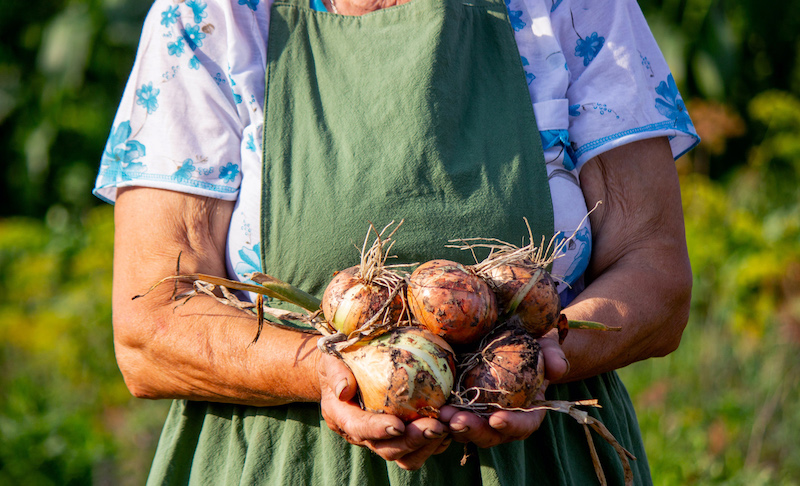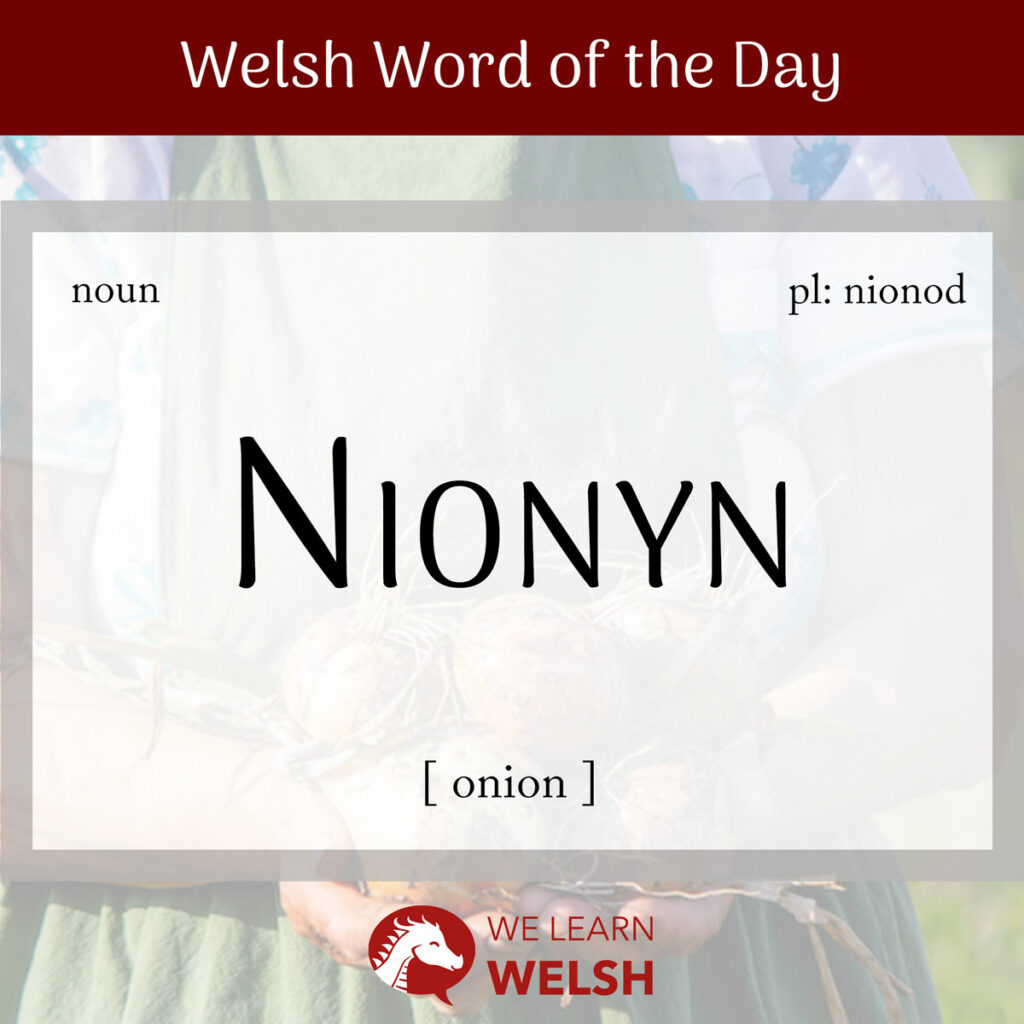One thing we all know about Welsh is that it’s chock full of variation. Just when you think you’ve mastered a phrase, you learn that it’s said completely differently in a town an hour away!
And this just doesn’t apply to phrasing but also to vocabulary. One of the worst culprits is the humble nionyn, or onion.
Now, I’ve shown my bias and chosen to name this article after the word I personally use. Nionyn (and nionod as plural) is what my family say and what I learnt at school – but it’s far from the only option. Read on to peel back the layers and discover all the different ways to say onion in Welsh – there might just be as many as on an nionyn itself! 😉
nionyn
onion
First, let’s talk etymology. What makes the sheer number of Welsh words for onion all the more baffling is that they actually share the same root: the Middle English word oinyon. As you’ve probably guessed, that’s the ancestor of the modern English onion, which means the Welsh and English words are, in fact, cognates.
Here’s a (probably non-exhaustive) list of the variants and spellings that I’m aware of:
- nionyn
- nionsen
- oinion
- onion
- wnion
- winionyn
- wynwynen
- winwnsen
- gwynwynyn
Phew! I’d say the two most common are nionyn and winwnsen, which is the go-to choice in most of South Wales. Its plural is winwns – if you say this out loud you’ll notice that it sounds very like onions!
And winionyn, which is the singular of wynwyn, is the literary version of the word. Mostly, all these are masculine nouns, although nionsen specifically is considered feminine.
What can make it even more complicated is learning to distinguish the singulars from the plurals. For convenience, I’ve listed the singulars above, but nionyn and all its cousins are actually what’s known in Welsh as collective nouns.
This essentially just means that the default form is the plural, which can be confusing for learners. In fact, plenty of first-language Welsh speakers casually use the default plural version even when they’re referring to only one vegetable, adding to the confusion.
Ga i brynu pedwar nionyn a dwy foronen, os gwelwch yn dda?
Can I buy four onions and two carrots, please?
Plus, different kinds of nionod have their own word too! A spring onion, very common in Welsh cuisine, is either a sibolsyn, or sometimes a shibwnsyn in South Wales. Some people call them nionod ifainc (young onions).
A pearl onion is a corwinwnsyn or a cornionyn, and shallots are nionod dodwy.
Nionod are edible planhigion (plants) with a strong arogl (smell) and blas (taste). Interestingly, they’re from the same plant family as the lili (lily). They grow from bylbau (bulbs), like many kinds of blodau (flowers).
They’re eaten pretty much all over the world, along with their biological relatives, garlleg (garlic) and cennin (leeks). Which is a good thing, because they’re pretty maethlon (nutritious), high in fitaminau (vitamins) and gwrthocsidyddion (antioxidants).
I like them as the base of a tasty cawl (soup) with plenty of tatws (potatoes), cennin and halen (salt) – but they’re also yummy wedi ffrio (fried) for brecwast (breakfast) or as the basis of a delicious cyri (curry). You can even have them amrwd (raw) in a brechdan (sandwich). Or if you really like a strong flavour, you might be a fan of nionod picl (pickled onions).
I don’t know what kinds of onions people have all over the world, but at home I mostly cook with nionod gwynion (white onions), nionod melynion (brown / yellow onions), or nionod cochion (red onions). It’s always a toss up because I think nionod gwynion have the nicest blas, but they really make my eyes water!
Dwi’n hoffi creision caws a nionyn.
I like cheese and onions crisps.
Luckily, while doing the research for this article, I discovered some tips for avoiding this nasty side effect.
Apparently, you should always torri nionod (cut onions) under dŵr (water), or after refrigerating the llys (vegetable) so that it’s oer (cold). This helps counter the cemigyn (chemical) that causes the irritation. You should also make sure your cyllell (knife) is as miniog (sharp) as possible before getting out your bwrdd torri (chopping board).
Now you know how to protect yourself, you’re well equipped to get out your recipe book and start doing some coginio (cooking). Though, as I mentioned earlier, sibols (spring onions) pop up a bit more frequently in Welsh cuisine than their bigger cousins. Often, they’re either in place of, or mixed in with, the national vegetable, cennin, as in the famous selsig Morgannwg (Glamorgan sausage).
Do you have a favourite rysáit (recipe) involving this much-loved cynhwysyn (ingredient)? Please do share it if so!


